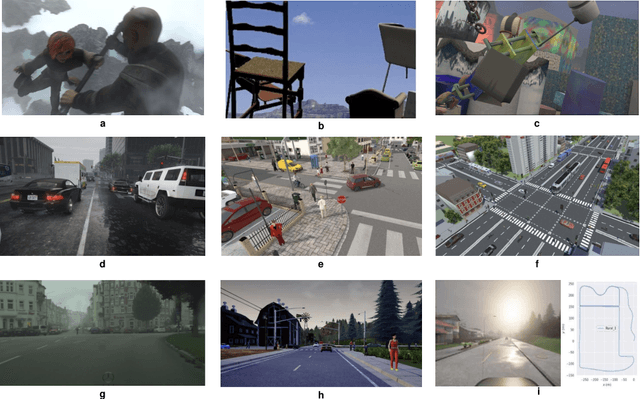Qiming Ma
Synthetic Datasets for Autonomous Driving: A Survey
Apr 24, 2023



Abstract:Autonomous driving techniques have been flourishing in recent years while thirsting for huge amounts of high-quality data. However, it is difficult for real-world datasets to keep up with the pace of changing requirements due to their expensive and time-consuming experimental and labeling costs. Therefore, more and more researchers are turning to synthetic datasets to easily generate rich and changeable data as an effective complement to the real world and to improve the performance of algorithms. In this paper, we summarize the evolution of synthetic dataset generation methods and review the work to date in synthetic datasets related to single and multi-task categories for to autonomous driving study. We also discuss the role that synthetic dataset plays the evaluation, gap test, and positive effect in autonomous driving related algorithm testing, especially on trustworthiness and safety aspects. Finally, we discuss general trends and possible development directions. To the best of our knowledge, this is the first survey focusing on the application of synthetic datasets in autonomous driving. This survey also raises awareness of the problems of real-world deployment of autonomous driving technology and provides researchers with a possible solution.
A Hardware Friendly Unsupervised Memristive Neural Network with Weight Sharing Mechanism
Jan 01, 2019



Abstract:Memristive neural networks (MNNs), which use memristors as neurons or synapses, have become a hot research topic recently. However, most memristors are not compatible with mainstream integrated circuit technology and their stabilities in large-scale are not very well so far. In this paper, a hardware friendly MNN circuit is introduced, in which the memristive characteristics are implemented by digital integrated circuit. Through this method, spike timing dependent plasticity (STDP) and unsupervised learning are realized. A weight sharing mechanism is proposed to bridge the gap of network scale and hardware resource. Experiment results show the hardware resource is significantly saved with it, maintaining good recognition accuracy and high speed. Moreover, the tendency of resource increase is slower than the expansion of network scale, which infers our method's potential on large scale neuromorphic network's realization.
* 10 pages, 11 figures
 Add to Chrome
Add to Chrome Add to Firefox
Add to Firefox Add to Edge
Add to Edge